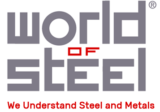Centrifugal Casting
Centrifugal casting process is used to produce castings that are cylindrical in shape. In Centrigugal casting, as permanend moldis rotated about its axis at high speeds as the molten metal is poured. The molten metal is centrifugally thrown towards the inside mold wall, where it solidifies. The casting is usually a fine grain casting with a very fine-grained outer diameter, which is resistant to atmospheric corrosion, a typical need with pipes. The inside diameter has more impurities and inclusions, which can be machined away.
Centrifugal casting has three primary metallurgical benefits:
- The rapid directional solidification from the OD to the ID produces a consistent grain structure with excellent strength and toughness.
- The molten metal on the interior wall feeds the solidification front and shrinkage porosity is minimized without the use of risers or gating.
- Under the centrifugal force, lighter inclusions and gas porosity in the molten metal strongly migrate to the interior bore.
Centrifugal castings are produced in either a vertical or horizontal casting orientation :-
Vertical Centrifugal Casting is is more suitable for cylinders with a ring geometry (diameter-to- length ratio [aspect ratio] >1). Vertical machines are often mounted in a concrete pit below ground.
Horizontal Centrifugal Casting is more suitable for tube geometries (diameter-to-length ratio [aspect ratio] <1). The horizontal machines are commonly mounted at floor level.
